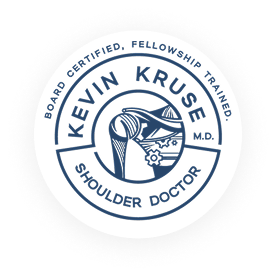A New Era in Shoulder Recovery
Surgery on the shoulder often comes with the expectation of weeks spent immobilized in a bulky sling. But what if that didn’t have to be the case? Enter a newer, more progressive approach known as No Sling Shoulder Surgery — a technique that challenges traditional postoperative care and aims to get patients moving sooner, safer, and more comfortably. Here we aim to address concerns around sling versus no sling after rotator cuff surgery, as well as whether or not there may be a need to wear a sling.
The Traditional Approach: Slings and Immobilization after Rotator Cuff Repair and Shoulder Surgery
For decades, sling use after this type of surgery has been the norm. Particularly after procedures like rotator cuff surgery repair or labral reconstructions, surgeons have typically recommended wearing a sling — sometimes with an abduction pillow — for 4 to 6 weeks.
The reasons are understandable:
- Protect the surgical repair
- Minimize movement and strain
- Allow healing to begin undisturbed
This sling immobilization, and similar immobilization groups, is often followed by a carefully staged rehabilitation program, gradually reintroducing movement, strength, and function.
What Is No Sling Shoulder Surgery?
No Sling Shoulder Surgery refers to a postoperative protocol where sling use is either minimized or eliminated entirely. Instead of spending weeks in and with shoulder immobilization, patients may begin gentle, supervised motion shortly after surgery.
This isn’t a one-size-fits-all method — it’s a patient-specific approach that hinges on surgical precision, modern fixation techniques, and the belief that early movement can actually aid recovery.
Why Ditch the Shoulder Sling?
Here are some of the main reasons surgeons are experimenting with no-sling protocols:
1. Faster Recovery of Range of Motion
Prolonged sling use can sometimes lead to joint stiffness and muscle deconditioning. Early motion may help:
- Preserve tendon and shoulder flexibility
- Maintain muscle activation
- Reduce the risk of frozen shoulder
2. Improved Comfort
Let’s face it — slings aren’t exactly cozy. They can disrupt sleep, daily tasks, and even posture. For some patients, being able to move more freely can enhance overall wellbeing.
3. Better Pain Management
Some studies suggest that early movement, guided by physical therapy, may reduce pain perception and reliance on medications.
4. Functional Confidence
By moving the shoulder sooner, patients often feel more confident in their recovery journey. This psychological boost shouldn’t be underestimated.
When a Sling Is Still Important
Before throwing your sling away, it’s important to note that this approach isn’t suitable for everyone.
Who might still need a sling?
- Patients with large or complex tears
- Individuals with weaker tissue quality
- Surgeries involving grafts or anchors under tension
- Those unable to commit to structured rehab or post-op follow-ups
Even in a “no sling” approach, some surgeons may recommend using the sling temporarily during activities like commuting, sleeping, or walking outdoors for safety.
The “No Sling” Protocol: What It Looks Like
Let’s break down a typical timeline for a no sling recovery protocol.
Weeks 0–2: Immediate Post-Op
- Sling use: Minimal or only when needed for support
- Exercises: Supervised passive range-of-motion (ROM), pendulums, and scapular retraction
- Goals: Reduce swelling, initiate gentle movement without stressing the repair
Weeks 2–6: Early Phase
- Sling: Usually phased out entirely
- Exercises: Assisted ROM begins (external rotation, forward flexion)
- Supervision: Close collaboration with a physical therapist is critical
Weeks 6–12: Functional Phase
- Motion: Transition to active ROM
- Strength: Begin light isometric and progressive resistance training
- Monitoring: Ongoing assessment for signs of discomfort or instability
Who Is a Good Candidate?
Not every patient is right for a no-sling protocol. Here’s who typically qualifies:
- Small to moderate tears
- Strong tissue integrity
- Secure surgical fixation
- High motivation and compliance
- Access to early physical therapy
Surgeons assess each case individually, weighing factors like age, activity level, healing capacity, and overall health.
The Role of Physical Therapy
Whether or not a sling is used, physical therapy is at the heart of recovery. For no-sling patients, early PT becomes even more important. The therapist ensures that:
- Movements stay within safe ranges
- There’s no undue stress on healing tissues
- Progress is tracked and adjusted weekly
Working with an experienced shoulder therapist makes all the difference.
Risks and Considerations
Even with encouraging and clinical outcomes, this method isn’t without concerns:
- Re-injury risk if motion is too aggressive early on
- Variable healing rates, especially in older adults
- Noncompliance can lead to complications
This approach demands discipline and close communication between orthopaedic surgeon, therapist, and patient.
Summary Chart: Sling vs. No Sling
| Phase | Traditional Sling Approach | No Sling Approach |
| Week 0–2 | Full-time sling | Optional sling, begin passive motion |
| Week 2–6 | Begin weaning off sling | Full mobility focus, guided ROM |
| Week 6–12 | Active motion, strengthening | Progress to functional training |
FAQs
1. Is no sling surgery safe?
Yes, for properly selected patients under guided care. It’s not universal but can be highly effective in the right circumstances.
2. Will I recover faster without a sling?
You might regain mobility sooner, but full recovery still takes time. Safety and healing remain top priorities.
3. Can I skip therapy if I’m not using a sling?
Absolutely not. Physical therapy is even more essential with a no-sling approach.
4. What if I feel unstable or sore without the sling?
That’s your cue to rest and notify your care team. It’s okay to use a sling part-time for comfort.
5. Will my surgeon offer this option?
Not all surgeons use this protocol. It depends on their experience, your condition, and surgical findings.
No Sling Shoulder Surgery represents a thoughtful shift toward patient-centered recovery. By embracing early movement and minimizing immobilization, it challenges convention and offers a new path for faster, more comfortable healing. But it’s not a shortcut — it’s a tailored strategy that demands attention, guidance, and commitment.
Stop your search and Speak with the Top Shoulder Surgeon
If you’re facing surgery of this type and perhaps curious about this technique, talk to expert shoulder surgeon, Dr Kevin Kruse, who will assess your case and help determine the safest, most effective path forward.

